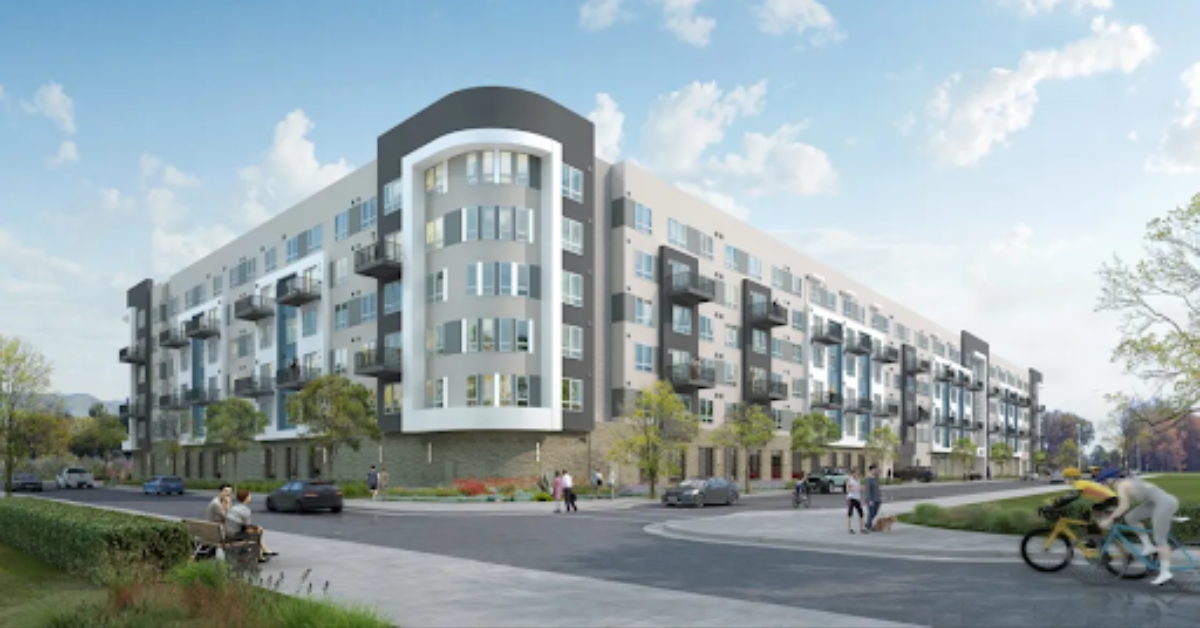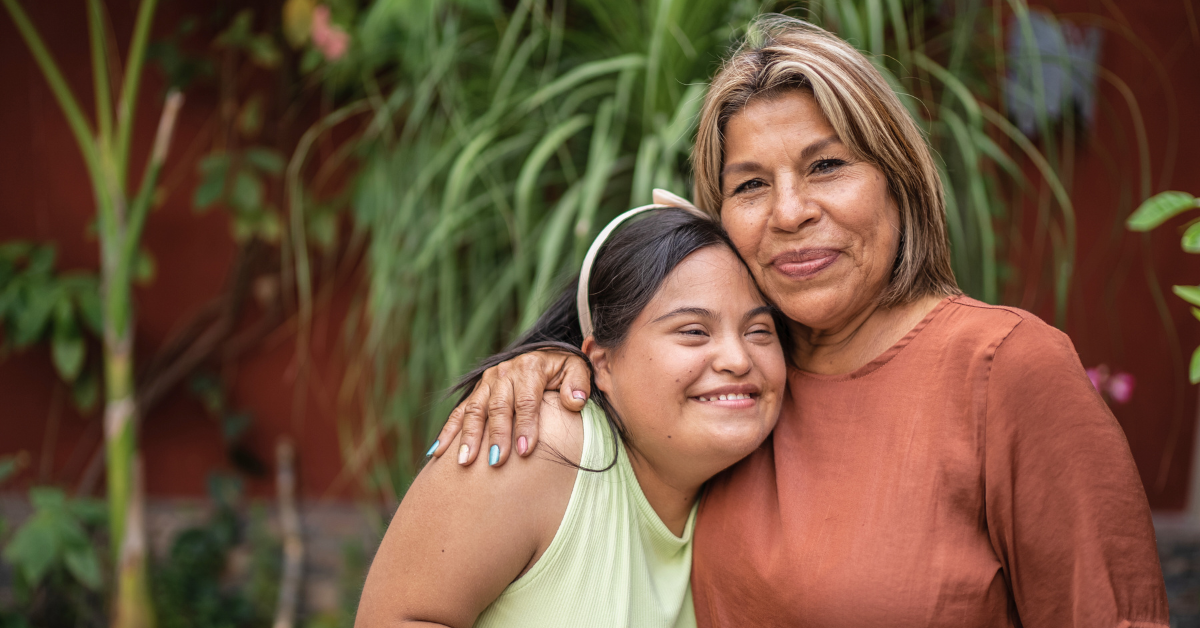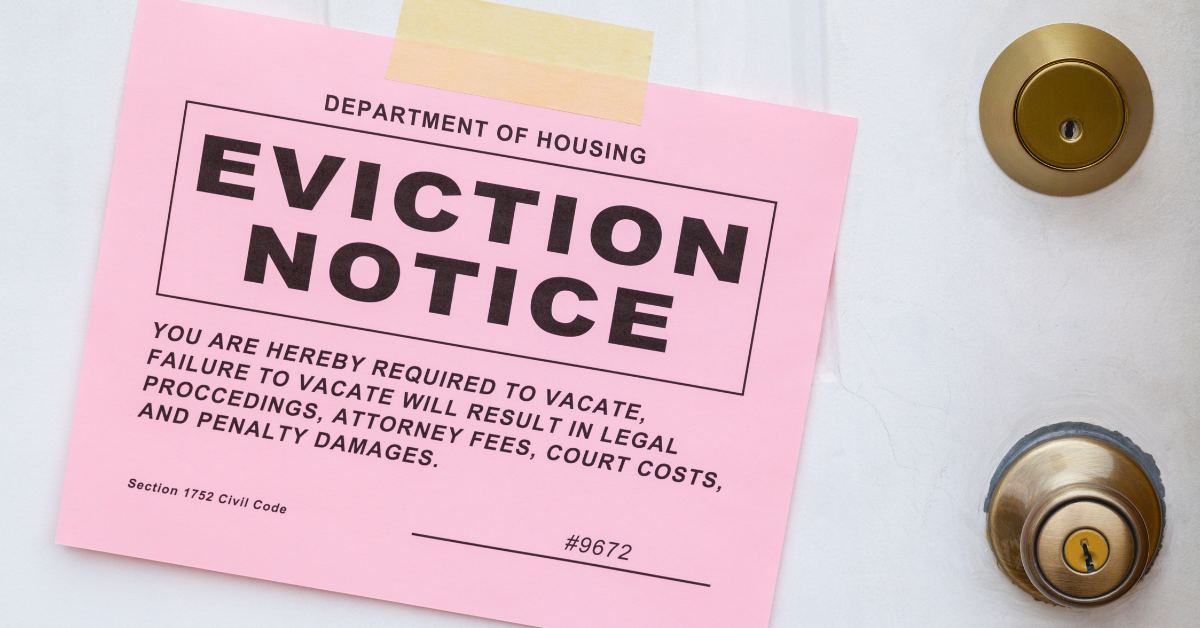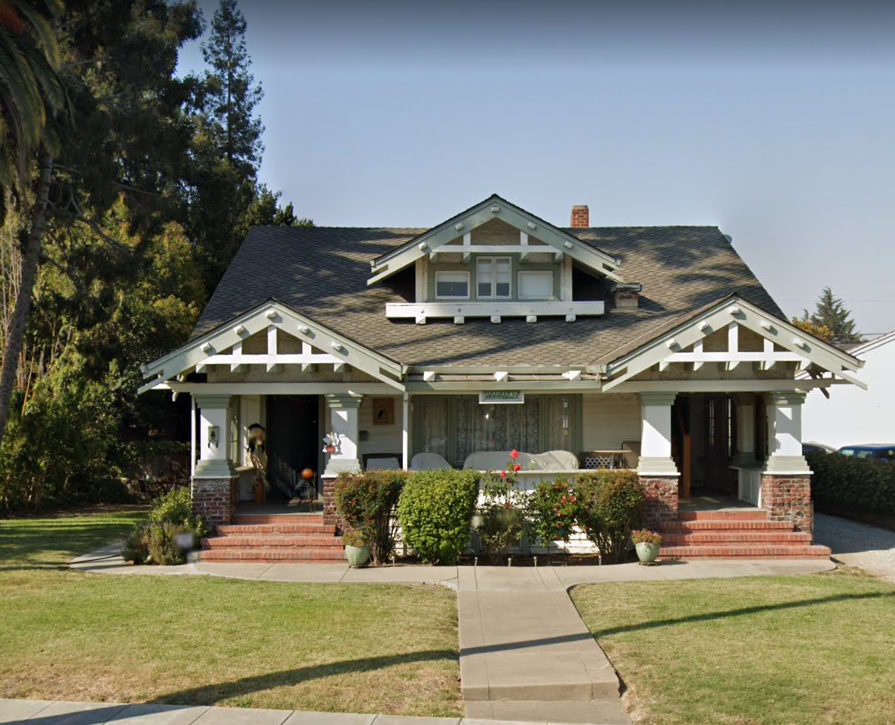The term “Missing Middle Housing” refers to housing that is naturally more affordable because of its density, yet blends in well with traditional single-family neighborhoods. With typical densities of 16-30 units per acre, Missing Middle Housing includes duplexes, four-plexes, courtyard apartments, live-work spaces, townhomes, and Accessory Dwelling Units (ADUs). Also included are “mansion homes” where single-family homes are re-envisioned to include multiple units.
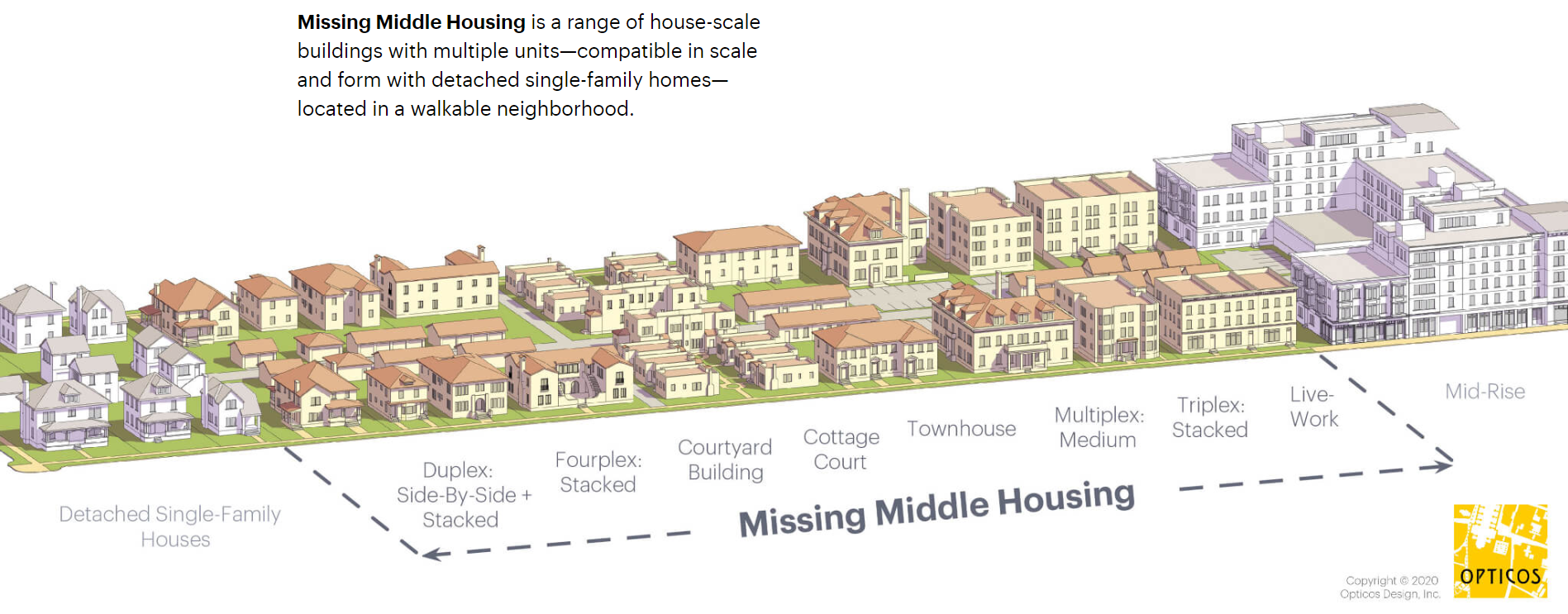
Illustration created by Opticos Design: Missing Middle housing, sometimes called Opportunity Housing, provides gentle density that blends well with existing neighborhoods. Since these units are smaller or afford economies of scale, they tend to be naturally affordable to moderate-income families.
These homes can help expand housing choices available to families with moderate incomes: those whose incomes are too high to qualify for traditional affordable housing, but too low to pay average market-rate rents without exceeding 30% of their incomes. As one of many symptoms of our regional housing crisis, families that once were considered middle income, sometimes making six-figure incomes, find themselves challenged to find decent, safe, and affordable housing. This is having a profound effect on normally stable middle-income households and threatens the underpinnings of the local economy and critical services. Because the need is great, a range of solutions — from changing the way we think about traditional residential neighborhoods to creative approaches to lower the costs of development — are gaining traction.
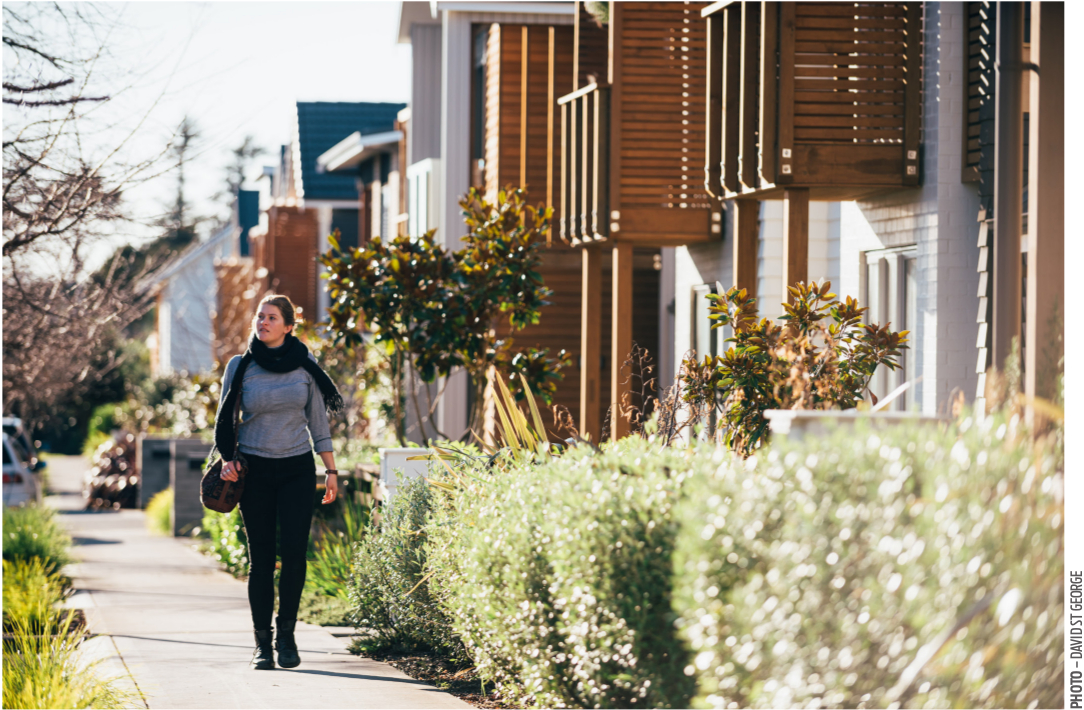
When the existing housing opportunities affordable to “missing middle” households fall short, employers have difficulty attracting and retaining even relatively well paid workers, and many families are forced to leave the region, and even the State, for areas with lower housing costs. The resulting instability of the local workforce and the increased traffic due to longer commutes into the County, pose economic and environmental problems for the entire region.
Missing middle housing types increase density while blending in with existing single-family neighborhoods. There are a range of strategies for developing housing that is naturally affordable within the private market (often referred to as Naturally Occurring Affordable Housing, or NOAH). It is almost always faster and less expensive to build missing middle income housing types than high density multifamily housing, as development tends to be only 2-3 stories at maximum which allows for traditional wood frame construction and can rely on existing city infrastructure, decreasing expensive site development costs.
The demand for smaller units nationwide “exceeds supply by up to 35 million units” (MissingMiddleHousing.com). Yet, many jurisdictions have outdated building and development codes or restrictive single-family residential zoning that make construction of smaller units more challenging.
Modest density housing types are not new, but housing of this type has not been developed at a significant rate in California for many decades. In cities like San Jose, where over 90% of all residential land is zoned exclusively for single-family homes, there is a real opportunity to both expand housing availability and create more affordable options for a diverse workforce.
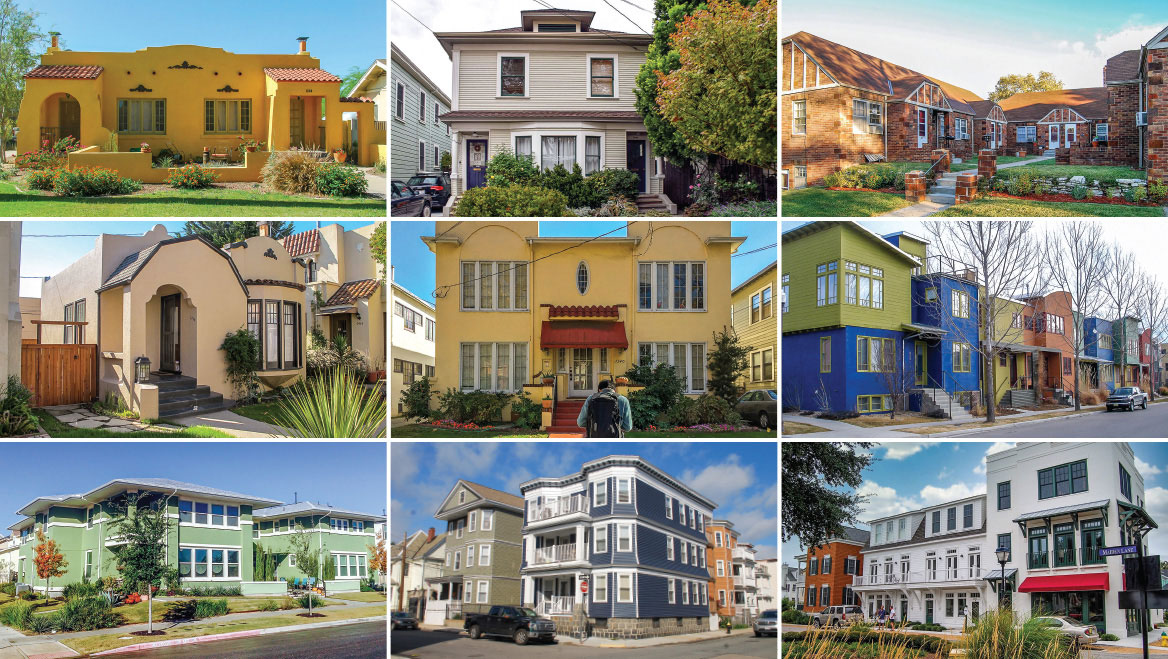
California’s SB 9
SB 9, which went into effect Jan. 1, 2022, allows property owners to split a single-family lot and add a second home or divide the lot into two and place duplexes on each. The state law outlines tenant protections and mandatory design standards such as minimum rear and side setbacks but allows individual jurisdictions to adopt additional design standards that go beyond the state’s requirements. Some cities in our region have adopted ordinances explicitly intended to create barriers to SB 9’s feasibility, many of which are under legal scrutiny and may be constrained by future state legislation. While we have not yet seen many applications here in the South Bay to use the provisions of SB 9, the law is a promising tool to gradually add gentle density to existing neighborhoods, expand housing choices, and increase opportunities for homeownership. SV@Home is part of the San Jose Neighborhoods for All coalition, formed in support of Opportunity Housing, to begin to remove barriers to building a community of inclusion where everyone can live, work and thrive. With the passage of SB 9 at the state level we made the decision to focus our collective energy on successful implementation of the State law, and to advocate for a separate study of incentives and subsidies that would expand homeownership, affordability, and opportunity.
Learn More in our Missing Middle White Paper.
Additional Resources
- Terner Center: Unlocking the Potential of Missing Middle Housing 2022
- Sightline Institute: Portland Just Passed the Best Low-Density Zoning Reform in US History 2020
- Sightline Institute: Talking Triplexes: Missing Middle Messaging Tips, 2019
- Missing Middle Housing
- Trulia: “Teacher, Teacher, Can You Live Here?,” 2017
- State of Oregon: “Character-Compatible, Space-Efficient Housing Options for Single-Dwelling Neighborhoods,“ 2016
- Daniel Parolek: “Missing Middle Housing: Responding to the Demand for Walkable Urban Living,” 2015
- Urban Land Institute: “The Macro View on Micro Units,” 2014
- Loni Gray: “Collaborative Living: Is it Your Next Step?” (Video from 2014 Living the New Economy Convergence)
